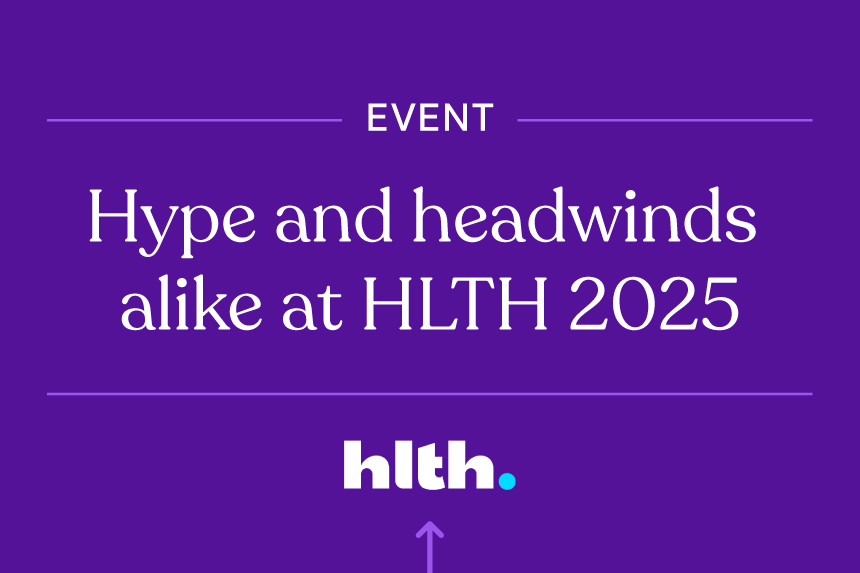The specialty pharmacy market remains one of the fastest-moving sectors in healthcare, driven by scientific innovation, evolving patient needs, and a shifting regulatory and economic environment.
As we move deeper into 2025, several key trends are shaping its trajectory, presenting both immense opportunities and significant challenges for all stakeholders. While by no means an exhaustive list, here are five key trends driving change in the specialty pharmacy landscape that stakeholders need to keep an eye on.
Specialty drug spend keeps climbing
While only a fraction of the U.S. population requires treatment with specialty drugs, these medications, which treat complex, chronic, and rare conditions, dominate drug spending. According to recent research, the specialty pharmaceuticals market grew from $92 billion in 2023 to $129 billion in 2024—and it is expected to continue growing at a CAGR of 39.8%, nearly reaching a staggering $1 trillion by 2030.
This disproportionate impact is being fueled by a steady influx of high-cost therapies targeting small patient populations with complex conditions such as cancer, autoimmune diseases, and rare genetic disorders. In 2024 alone, the FDA approved a record number of specialty medications, including several gene therapies and biologics priced well into the six- and seven-figure range. Many of these treatments offer transformative clinical benefits, but their cost raises tough questions around value, access, and long-term affordability.
A prime example is Casgevy, a CRISPR-based gene therapy. Approved to treat sickle cell disease and transfusion-dependent beta-thalassemia, Casgevy is priced at around $2.2 million per patient. While the therapy has curative potential and could reduce lifetime healthcare costs, the upfront expenditure is more than considerable, especially for payors and employers operating on annual budgets.
Beyond entirely new drugs, a substantial portion of the cost increase stems from existing specialty drugs gaining expanded indications. When a medication proves effective for additional conditions, its eligible patient base grows significantly, leading to a surge in utilization and overall spend. The most compelling recent example is the GLP-1 agonist class. Originally developed for type 2 diabetes, their proven efficacy in weight management led to subsequent approvals for chronic weight management. These medications carry a high monthly price tag (often over $1,000), and with millions of individuals eligible for obesity treatment, their expanded use has created an unprecedented surge in demand and corresponding drug spend for payors and employers, forcing difficult decisions regarding formulary coverage and utilization management.
For specialty pharmacies, the rising cost of therapies means a heightened need for comprehensive support services: Benefits investigation, prior authorization, financial assistance coordination, and adherence monitoring.
Cell and gene therapies are becoming more promising than ever
One of the most exciting, and transformative, trends in specialty pharmacy is undoubtedly the accelerating arrival and commercialization of gene and cell therapies (CGTs). Once considered experimental, these therapies are now achieving regulatory approvals, entering commercial markets, and being integrated into real-world clinical care.
These revolutionary treatments, which include gene editing technologies like CRISPR, CAR T-cell therapies, and various forms of cellular manipulation, offer the unprecedented potential to address the root causes of diseases rather than just managing symptoms. They represent a fundamental paradigm shift in medicine, promising long-term efficacy, and even curative outcomes for conditions that were previously untreatable.
But while the science is groundbreaking, the commercial and logistical implications are incredibly complex.
Unlike some traditional medications, CGTs are often living biological products that demand ultra-specialized handling. Many CGTs must be stored and transported at extremely low temperatures (e.g., below -120°C in liquid nitrogen), requiring specialized freezers and transportation containers, as even minor temperature deviations can compromise product viability. Similarly, the viability of these living cells is often time-sensitive, necessitating rapid and coordinated transport between collection centers, manufacturing facilities, and treatment sites. Any delay can jeopardize the entire therapy.
CGTs also demand unprecedented coordination across providers, specialty pharmacies, manufacturers, payors, and patients. CAR-T cell therapies like Yescarta and Abecma are examples of how CGTs create intricate logistical challenges. These therapies, used to treat certain forms of lymphoma and multiple myeloma, require the harvesting of the patient’s T cells as a key component in the manufacturing process. The patient-specific nature of these drugs has necessitated the buildout of CAR-T centers of excellence and high-touch case management and coordination from the entire medical team to ensure patients complete the multi-step treatment process safely and on schedule.
These therapies are redefining the role of the specialty pharmacy. Simply dispensing drugs is no longer the sole core function—now, coordination is of top priority. Leading pharmacies must consider how they can manage complex clinical workflows and oversee logistics while providing ongoing patient engagement and education.
Leveraging the power of AI is now a must
Artificial intelligence, machine learning, and predictive analytics are sweeping across the healthcare industry, and the specialty pharmacy landscape is no exception.
These technologies are transforming how data is leveraged to optimize patient care, streamline workflows, anticipate barriers, and demonstrate value to manufacturers and payors. In an industry built around high-cost therapies and complex patient journeys, real-time intelligence and proactive intervention can make the difference between therapy success and failure. AI and predictive tools offer a way to do more than react—they enable specialty pharmacies to think proactively, forecast, strategize, and act ahead of the curve.
Here are a few ways life sciences leaders are leveraging AI:
- Predicting non-adherence and therapy disruption. AI algorithms can identify patients at risk of missing refills, skipping doses, or dropping off altogether—often before it happens.
- Earlier, more tailored intervention. By analyzing patterns across claims data, refill behavior, socioeconomic indicators, and patient-reported outcomes, these tools enable care teams to intervene early with targeted outreach and support.
- Revenue cycle management. AI can analyze claims and billing data to identify potential discrepancies, optimize billing methods, and flag overlooked reimbursement opportunities, directly impacting a pharmacy’s financial sustainability.
- Alleviate administrative burden. AI-powered systems are reducing administrative burden on pharmacy staff and minimizing delays in patient access by preemptively comparing patient data against payor requirements, auto-populating forms, and streamlining workflows.
Biosimilars are bringing disruption and opportunity to the market
As you know, biosimilars are highly similar versions of FDA-approved biologic drugs, demonstrating no clinically meaningful differences in terms of safety, purity, and potency from their reference products. The growing popularity and expanding footprint of these alternatives represent a pivotal shift in the specialty pharmacy landscape, bringing both disruption and opportunity.
The primary driver of biosimilar proliferation is the expiration of patents on blockbuster biologics. The most impactful example of this was the introduction of adalimumab biosimilars in early 2023. More recently, the entry of ustekinumab biosimilars in 2025 is poised to create a significant wave of competition in the immunology space. These patent cliffs are opening up vast market opportunities, fostering a more competitive environment for therapeutic areas with historically high costs.
As we discussed earlier, the staggering costs of specialty drugs in the U.S. market is placing significant pressure on insurers and employers. To combat this pressure, these entities are aggressively implementing strategies to accelerate biosimilar adoption. Their efforts include streamlining the prior authorization process for biosimilars (perhaps even using AI to do this!), placing biosimilars on preferred payment tiers in the formulary, and maybe even providing incentives to providers for prescribing these alternative medications.
Despite the benefits of biosimilars, there are some hurdles that the industry needs to overcome. Some of these barriers relate to:
- Provider and patient reluctance to switch, due to perceived clinical uncertainty or a lack of incentive.
- Confusion and resistance to the concept of a biosimilar, which should be rectified with sufficient education and awareness.
- A fragmented payor landscape, as each organization can make changes to its formulary independently, creating an inconsistent environment.
Also, it’s unlikely that the manufacturers of the original drug will stay idle as the market shifts. While it’s impossible to predict how these businesses will respond, we can reasonably expect manufacturers to consider rebate strategies to remain competitive.
It’s imperative to have data-driven insights
As the life sciences landscape, and more specifically the specialty pharmacy landscape more specifically, changes, the ability to understand how patients navigate the healthcare system and where they encounter friction is more important than ever. Access delays, financial barriers, adherence gaps, and clinical complexity all leave behind a trail of data. But raw data alone isn’t enough.
To stay competitive in today’s market, you need actionable, data-driven insights. Insights that guide smarter decisions, enable faster interventions, and demonstrate measurable value to payors, manufacturers, and providers.
Today’s stakeholders expect more than retrospective reporting. They want real-time visibility into performance, with the ability to drill down by indication, site of care, or patient population. For specialty pharmacies, that means using analytics to identify patterns, predict outcomes, and optimize every step of the patient journey.
Whether it’s reducing time to fill, improving refill rates, or supporting outcomes-based reimbursement models, data is no longer just operational—it’s strategic. Pharmacies that build strong analytics capabilities are better positioned to win limited distribution partnerships, secure payor contracts, and deliver the kind of care that drives both clinical and economic value.
Learn more
The common thread weaving through these trends is the undeniable complexity of specialty care. Patients on these life-changing therapies often face intricate treatment regimens, significant financial burdens, and complex logistical needs.
For specialty pharmacies, success in this environment hinges on an unwavering commitment to patient-centricity, coupled with strategic agility and operational excellence. This means not just dispensing medication, but providing high-touch support, leveraging cutting-edge technology to streamline processes and gain crucial insights, and continuously adapting to an evolving payor and regulatory landscape.
Fortunately, we’ve got you covered. Definitive Healthcare offers the data, analytics, and expertise you need to get clarity in a complex and fiercely competitive market.
Looking to deepen your understanding of the specialty pharmacy landscape or bring a drug to market? Start a free trial today to access comprehensive data on payors, providers, patients, therapy areas, and much more.




